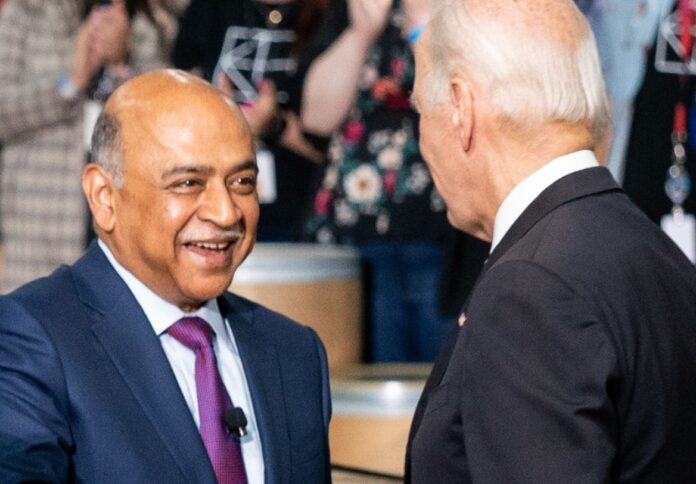
IBM today announced a USD 20 billion manufacturing investment and showcased its innovations in semiconductor design at its site in Poughkeepsie, New York.
The company presented its commitment to advancing critical innovations to US President Joe Biden, who visited the site along with other distinguished guests. The Big Blue also detailed its plan to invest $20 billion across New York’s Hudson Valley region over the next 10 years.
Backed by the state of New York, the massive investment is intended to unlock new discoveries and opportunities in semiconductors, hybrid cloud, artificial intelligence and quantum computing.
IBM solutions showcased at Poughkeepsie are vital to the future of the global industry and will greatly benefit from the recently ratified CHIPS and Science Act, said Arvind Krishna, chairman and CEO of IBM.
“This law will help ensure a reliable and secure supply of next-generation chips, and help advance the science and business of quantum computing,” Krishna said in a statement.
Poughkeepsie is part of a broader ecosystem of innovation centres in the Hudson Valley region pushing the boundaries of semiconductor design and manufacturing, with other sites located in Yorktown Heights and Albany.
“Where is it written that we can’t lead manufacturing in the world? The supply chain is going to start here and end here, in the United States,” Biden said during his visit to the facility.
Poughkeepsie produces the latest generation of IBM zSystems mainframe, which underpin the global economy, Krishna noted.
The site houses IBM’s first Quantum Computation Centre, where a large number of quantum computers run in the cloud.
“For decades, the site has ushered in innovations that have a major impact on the world. It produced data processing systems that made the U.S. social security system possible, made the Apollo Program that put a man on the moon a success, and powered businesses in every industry,” the IBM chief said.
“Our vision is for the site to become a global hub of our quantum computing development, just as it is today for mainframes.”



















